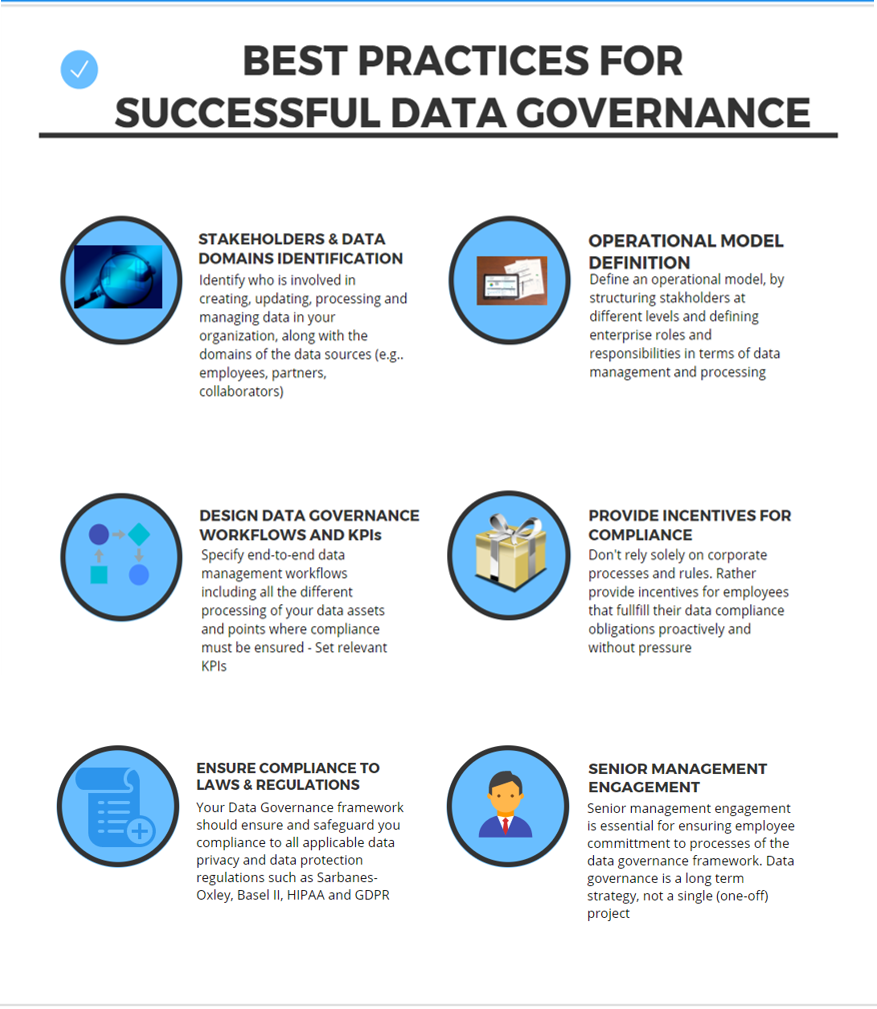Enterprises are increasingly becoming data-driven organizations, as they produce, process and manage very large amounts of data in order to optimize their business and managerial decision-making processes. Data governance is a key element of the competitiveness and productivity of any data-driven enterprise. In particular, data governance deals with the full range of processes that access, manage, process, use, improve, secure and protect data within an organization, including the ever important practices of complying with laws, regulations and standards. Complementing these processes the data governance framework defines the stakeholders involved in data governance, their roles and responsibilities, along with the exact governance processes that they should follow, including concrete KPIs (Key Performance Indicators) for measuring them.
The following infographic describes six best practices for establishing a successful and effective data governance framework including:
- Stakeholders and data domains identification.
- Operation model definition.
- Data governance workflows.
- Providing incentives for compliance.
- Adhering to laws and regulations.
- Involving senior management in data governance.
The development of a data governance framework should be seen as a strategic decision that will impact the entire organization, as almost all business units and departments are directly or indirectly involved in the production and processing of enterprise datasets. Hence, its development requires the commitment of key stakeholders in an organization, including the senior management. This commitment will pay-off as effective data governance is a key to maximizing value for money on data operations, while avoiding regulatory risks.
Do you have a data governance framework in place? If not, it is probably time you starting developing it. If yes, remember that there is always room for improving it and aligning it better to your business processes.










